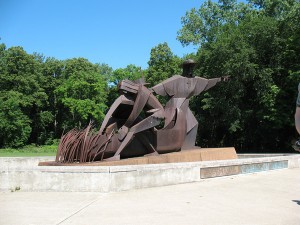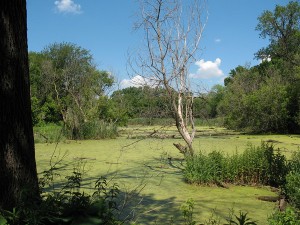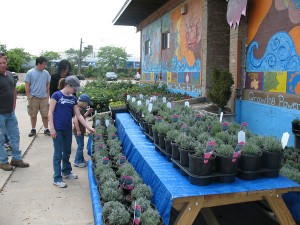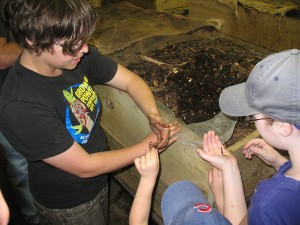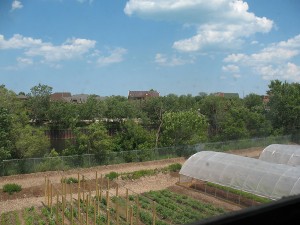My grandmother Millie was one of the most important and influential people in my life, and it was a distinct honor to write her obituary this week. Here is the full text, which is reprinted in today’s edition of the Joliet Herald-News, along with a few vintage photographs.

Mildred Edith Hicks Bryson, 98, of Joliet died peacefully on July 11, 2012, of natural causes. She was at home with her family by her side.
Mildred “Millie” Hicks was born at home May 17, 1914, on the East Side of Joliet, IL, the daughter of Leslie Timothy and Margaret Edith (Nicholson) Hicks. She married Abel Hurst Bryson on June 17, 1935, in Joliet. He died on November 4, 1987.
Millie was a lifelong resident of Joliet — first on the East Side, where she lived with her family near Hickory Creek; and later on the West Side, where her parents built a home in 1925 on Reed Street, then the city’s far western boundary. She graduated from Farragut School and Joliet Township High School (class of 1931); completed teacher’s training at Joliet Junior College in 1933; and subsequently taught in a one-room schoolhouse in rural Will County near Manhattan, IL.

After her marriage in 1935, she left teaching (as was customary in those days) and worked diligently thereafter as a homemaker, mother, elder caretaker, and church volunteer. Once her children were grown, she was in high demand as an accompanist in the Joliet area, particularly for short-notice funeral services. She also cashiered for several years at Plainfield Road Pharmacy. No matter the job, Millie was a hard worker who valued getting things done the right way, preferably “in a jiffy.”
Born into a musical family — her father Leslie Hicks played banjo and guitar in Charlie Formento’s Dance Band during the Depression years — Millie was an accomplished pianist who could sight-read expertly, and she was a nifty dancer to boot. She possessed a lovely alto voice and instilled a profound and lasting love of music within her family.
Faith and church involvement were foundational to Millie’s life. Long a member of First Baptist Church on Joliet’s East Side, she was a founder and charter member of Judson Memorial Baptist Church on the West Side in 1955. For decades she was a respected leader in church affairs at Judson, particularly music, education, governance, and mission outreach. Millie played organ and piano, directed the choir, served as deaconess, taught Sunday School, raised money for mission work, led women’s Bible studies, and performed countless other services for the church community. She also was a longstanding member of The King’s Daughters and Sons international Christian service organization.
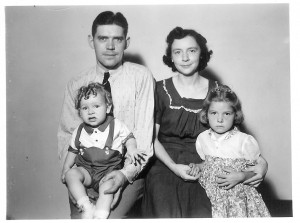
As the Bryson matriarch, Millie was utterly devoted to her family and for 24 years took care of elderly relatives in her small home even as she raised her own children. She was a beloved mother, grandmother, and great-grandmother, as well as an expert seamstress and cook (though by her own admission an indifferent housekeeper). For many years she made her kids’ outfits as well as most of her own clothes, and her embroidery work was unparalleled.
Family dinners at her home on Oneida Street were legendary. She routinely prepared elaborate meals singlehandedly in a miniscule kitchen, and she was a skilled confectioner of pies, cakes, rolls, donuts, cookies, and a special chocolate sauce.
That kitchen gained a special place in family lore when she and her husband Abe decided in 1960 to use the money they had long saved for a kitchen expansion/remodel to instead purchase a small rustic cabin in the north woods of Michigan’s Upper Peninsula. Ever since, the Bryson cabin at Crooked Lake has been a treasured vacation site for four generations of the Bryson and Laury families. And though she was city bred and couldn’t swim a stroke, Millie came to enjoy camping out and learned how to handle a canoe in rough water and pitch a tent in the rain.
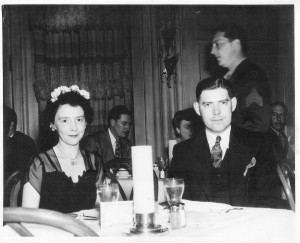
Anyone who came to know Millie Bryson would attest that she was a force of nature possessed of both tremendous energy and a winning personality. Fiercely independent and strong-willed, she had a wonderful sense of humor, quick wit, and delightful laugh — qualities she retained even after going blind late in life. She was an avid reader and skilled crossword puzzle-solver. A devoted baseball fan since 1929, she followed her beloved Chicago Cubs on the radio “through thin and thin,” as she often noted wryly.
Surviving are her son, Ralph A. Bryson, of Joliet; her daughter, Margaret “Peggy” D. Laury (Everett), of Danville, IL; six grandchildren, Michael A. Bryson (Laura) of Joliet, David P. Bryson of Chicago, Laura E. Bryson of Crest Hill, Ann E. Luciani (Paul) of St. Louis, MO, Susan K. Laury of Atlanta, GA, and Catherine D. Wiese (Donald) of Danville; and four great-grandchildren, Lily and Esmé Bryson of Joliet, and Libby and Jacob Luciani of St. Louis, MO.
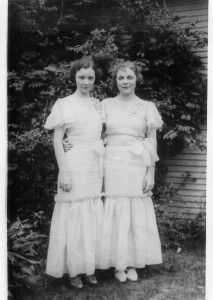
She was preceded in death by her husband; her parents; her siblings, Leslie C. Hicks, Doris E. Holman (Harold), Roy A. Hicks, and Barbara L. Hicks; and her daughter-in-law, Patricia K. Bryson.
A celebration of Millie’s life will be held on Tuesday, July 17, 2012, at Judson Memorial Baptist Church, 2800 Black Road, Joliet, IL 60435. Visitation with the family will be at 3pm; services will start at 4pm. A church dinner will immediately follow the services.
In lieu of flowers, memorials may be made to Judson Memorial Baptist Church or to Joliet Area Community Hospice, 250 Water Stone Circle, Joliet, IL 60431. Arrangements are being handled by Carlson Holmquist-Sayles Funeral Home of Joliet.
Readers who wish to post a memory of Millie or a note to the family may do so here on the Carlson Funeral Home website. Also see this essay I wrote about Gram last week for my monthly op-ed column in the Joliet Herald-News.
